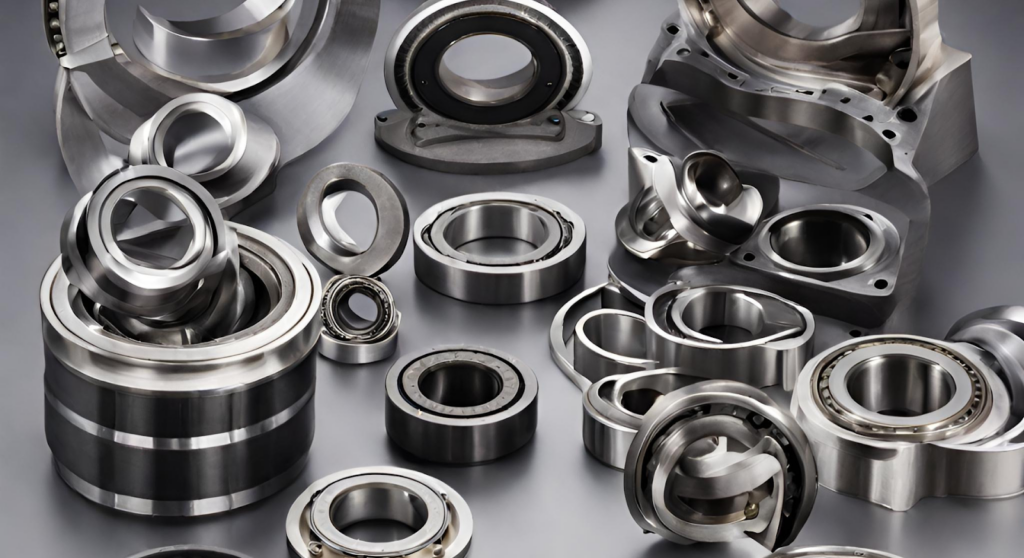Why do hub bearing rivets deform? What mechanical factors are involved? Understanding the cause is key to prevention.
Overloading due to excessive force or improper installation is the primary mechanical cause of rivet deformation in hub bearings. Proper installation techniques and load management prevent deformation. Ensure long-lasting performance.
Let’s explore the primary mechanical cause of rivet deformation in hub bearings. I will share insights based on my experience with bearing systems. I will also provide practical preventative solutions.
What are Riveted Hub Bearings?
What are riveted hub bearings? How are they different from other designs? Understanding their construction is essential.
Riveted ハブベアリング[^1] use rivets to secure components. This creates a strong, integrated unit. They simplify assembly and enhance durability. They’re common in automotive applications.
Riveted ハブベアリング[^1] are a type of bearing assembly. Rivets are used to hold the components together. The rivets create a strong, integrated unit. Riveting simplifies assembly.
Riveting enhances the durability and rigidity of the bearing. This makes it able to bear heavy loads. This design is common in automotive applications because they are simple and easy to fix. We also use rivets in our tooling. The rivets have to be tight and aligned or the tool will fail.
The Primary Cause: Overloading and Excessive Force
What is the main mechanical reason behind rivet deformation? What types of force are responsible? Identifying the root cause is crucial.
Overloading is the primary mechanical cause. This includes:
- Excessive axial or radial loads
- Impact forces from poor road conditions
- Improper installation techniques
These factors stress the rivets beyond their design limits.
Overloading and excessive force is the primary mechanical cause of rivet deformation in hub bearings. Excessive axial or radial loads place stress on the rivets. This can happen under heavy braking or during sharp turns.
Impact forces from potholes or rough roads can cause sudden deformation. Improper installation causes deformation because the stress is applied unevenly on the rivets.
Rivets deform when the load exceeds their yield strength. This leads to permanent deformation. Think of Jacky in Canada driving on bad roads; he is probably experiencing high stress on the material.
How Overloading Leads to Deformation
How does overloading specifically cause rivet deformation? What stages are involved? Understanding the process is vital for prevention.
- Plastic deformation of the rivet material
- Shearing of the rivet head or shank
- Loosening of the riveted joint
This compromises the bearing’s structural integrity.
Overloading leads to rivet deformation through a process that weakens the integrity of the hub bearing. It starts with plastic deformation.
The rivet material experiences stress beyond its elastic limit, and this results in permanent changes in shape.
If the stress continues, the rivets can shear. This means that the head or shank separates completely. This leads to further instability.
Finally, the entire riveted joint loosens and causes noise and wobbling.
Preventing Rivet Deformation
What steps can prevent rivet deformation? How to ensure proper load management? Preventing damage ensures long-term reliability.
To prevent rivet deformation:
- Ensure proper vehicle load distribution
- Avoid harsh driving conditions
- Use correct installation torque
- Inspect bearings regularly for wear
These steps reduce stress and extend bearing life.
You can prevent rivet deformation of hub bearings by following best practices. Make sure to distribute the load evenly in the vehicle. Avoid harsh driving conditions.
Use the correct torque during installation. This prevents over stressing. You should also regularly inspect the bearings for wear.
By following this, you can reduce stress on the rivets and extend the service life of the hub bearings.
This is just like our molds, if the mold is well-maintained, it will extend the life of the molds.
Excessive force deforms rivets and causes damage. Maintenance reduces these kinds of problems.
[^1]: Explore the mechanics of hub bearings to enhance your knowledge of automotive systems.

